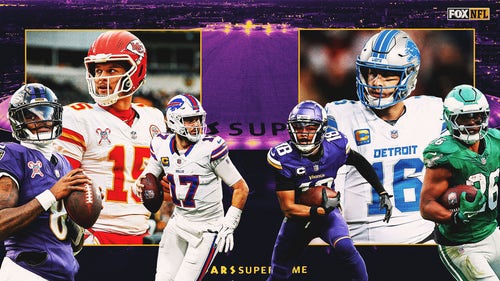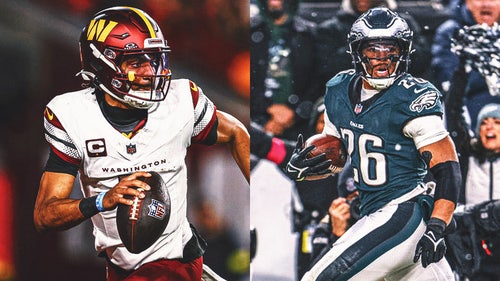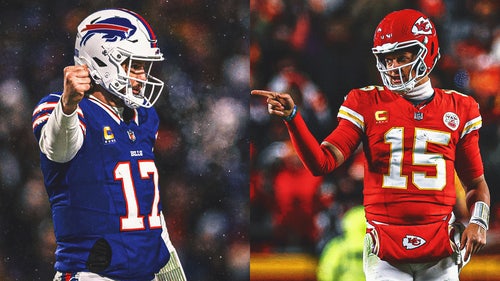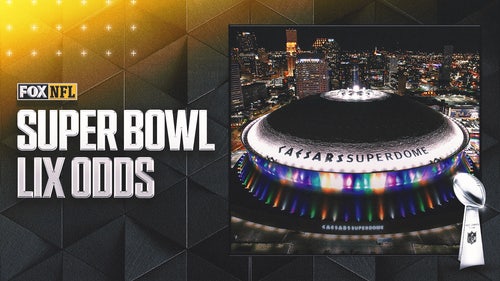
50 years ago, Bears landed Butkus & Sayers in same draft - but the wins never followed
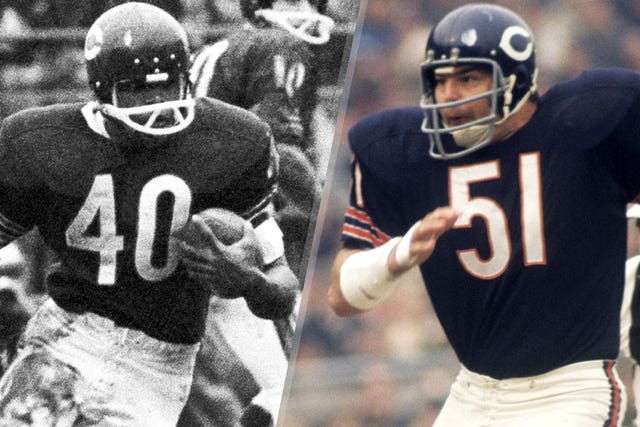
After four straight seasons without a postseason appearance, the 2015 Chicago Bears could use a draft like the one the franchise enjoyed a half-century ago.
Provided it actually corresponded to team success this time around.
The Bears landed two of their most iconic players in running back Gale Sayers and linebacker Dick Butkus with the Nos. 3 and 4 overall respective picks in the 1965 draft.
Sayers and Butkus? Although both can take solace in the legacies they built both during and after their NFL careers, neither made the playoffs before retiring as member of the Bears.
"We could never seem to get over the hump," said ex-Bears safety Richie Petitbon, a teammate of Butkus and Sayers from 1965-68. "It was just a strange thing."
So was the draft that brought Sayers and Butkus to the Windy City.
HOW IT CAME TO PASS
Only four other classes in the past 50 years yielded at least two Pro Football Hall of Fame inductees chosen by one team.
Collegians selected by Pittsburgh in 1970 (Terry Bradshaw and Mel Blount) and 1974 (Lynn Swann, John Stallworth, Jack Lambert and Mike Webster) would win four Super Bowls with the Steelers. Tampa Bay's 1995 duo of defensive tackle Warren Sapp and linebacker Derrick Brooks got their championship rings in Super Bowl XXXVII.
And while the prize picks of Buffalo's 1985 draft crop â defensive end Bruce Smith and wide receiver Andre Reed -- didn't capture a title, they were part of the only franchise to ever appear in four consecutive Super Bowls.
But in 1963, the Bears were NFL champions after a two-decade drought. Any hopes of repeating were dashed in 1964 training camp. Two of the team's best and most well-liked players â running back Willie Galimore and wide receiver John "Bo" Farrington -- were killed in a one-car accident. A road sign was down, causing the players to miss a turn and fatally flip their vehicle.
"It totally wiped out the '64 season," Petitbon recalled in a telephone interview with FOX Sports. "It had a devastating effect."
The 1964 Bears finished 5-9. But before that season had ended, there was renewed hope for the 1965 campaign courtesy of the draft that was coincidentally being held in Chicago. The Bears held the third and sixth overall picks thanks to earlier trades with Pittsburgh and Washington along with their own No. 4 selection.
Those choices were made more valuable by the draft yielding one of the greatest college classes in NFL history. Wide receiver Fred Biletnikoff, linebacker Chris Hanburger and quarterback Joe Namath joined Sayers and Butkus as Hall of Famers. A slew of others notables included quarterback Craig Morton (a two-time Super Bowl starter), two future head coaches (Marty Schottenheimer and the undrafted Dan Reeves) and postseason award recipients like offensive lineman Ralph Neely, defensive tackle Walter Johnson, and wide receivers Jack Snow and Otis Taylor.
The draft process at the time was radically different than what will unfold later this week when the event returns to Chicago for the first time in 50 years. First, there were no pre-draft preparatory events like the NFL Scouting Combine or Pro Days for general managers, coaches and scouts to attend en masse. The draft was simply held without television coverage or media hoopla in late November just after the regular college season ended.
An even bigger twist: There was another league competing to sign the top prospects.
The upstart American Football League had just received an infusion of television capital in its fifth year of operations. This made it possible for the group to competitively bid for or, in the case of the New York Jets Joe Namath, outspend NFL clubs for talent.
When the New York Giants and San Francisco used the top two picks respectively on fullbacks -- another radical departure from today's NFL -- the door was opened for Chicago to nab Sayers, Butkus and No. 6 pick Steve DeLong. But this also meant the Bears would have to change their notoriously frugal ways.
It didn't happen with DeLong. The University of Tennessee offensive tackle spurned Chicago for the San Diego Chargers. DeLong, a 1969 AFL All-Star who did ultimately join the Bears for his final season in 1972, died in 2010 at the age of 67.
Chicago was able to lure Sayers from signing with the AFL's Kansas City Chiefs, which believed it had the inside track because he played at the nearby University of Kansas. The Bears felt the same hometown vibe about Butkus because he was a Chicago native who played at the University of Illinois.
Butkus, though, might have signed with the Denver Broncos if that AFL team's offer was high enough. Butkus left face-to-face negotiations to his attorney in Chicago before heading to New York City for an appearance honoring college football's All-America team on the "Ed Sullivan Show" the night before the draft.
"While I was at a restaurant, my attorney called and read the deal and said the Bears were going to draft me," Butkus said. "It floored me. I had never made any contact with them before."
Butkus soon would be having the type of physical contact that cemented his place in football lore.
DYNAMIC DUO
Butkus made an immediate impact in Chicago at middle linebacker replacing Bill George -- who later became a Hall of Fame selection himself -- by earning the first of six All-NFL honors as a rookie.
"Bill said as soon as he saw Butkus walk on the field he knew his days were numbered," said Bob Wetoska, a Bears offensive lineman from 1960-69.
One famous photograph captures Butkus at his best. His outstretched arms are wrapped around a Green Bay rusher on one side and a blocker on the other while a third Packers player is blocking Butkus across the midsection in vain.
"Dick was just the toughest son-of-a-gun you could ever run into," said Mike Ditka, a Bears tight end and Butkus teammate in 1965 and 1966. "He was the real deal. He played the game you're supposed to play it. He played it hard all the time."
While his forte was run-stuffing, Petitbon said then-Bears defensive coordinator George Allen compensated for deficiencies Butkus had in pass coverage through a scheme that allowed the middle linebacker to freelance. Butkus recorded a career-high five of his 22 overall interceptions in 1965.
"George let Dick become a complete football player," said Petitbon, who later became renowned for his work as Washington's defensive coordinator in the 1980s and '90s. "George showed a lot of ingenuity in realizing what he had in this kid and a way he could use him to get the most out of him on the field at all times."
Generations after his final snap in 1973, the name "Butkus" remains synonymous with hard hits, nasty tackles and an attitude to match. In fact, the Butkus Award is annually given to college football's top linebacker.
Where Butkus was pure force, Sayers personified athletic grace. The NFL had its share of great running backs to the point, but none who moved as fluidly as the "Kansas Comet."
"It was his ability to change direction running at full speed," Wetoska told FOX Sports. "Generally, guys who are running straight ahead have to take a side-step to juke everybody. It seemed like Gale would make all his moves going full speed."
Petitbon said it was those skills that helped Sayers quickly win over Bears veterans after he initially caused a locker-room stir with his choice of attire.
"You're always a little leery of rookies who are supposed to be good," Petitbon said. "When he first got to camp, he was wearing something that was like rubberized pants. They were different than anyone else's. Everyone on the team thought he was a candy-ass. Then you start watching him run and nobody could tackle him.
"Suddenly, everybody was wearing those same pants."
Sayers was flashier on the field. His first big splash came when scoring two touchdowns during a 23-14 loss to Green Bay that dropped Chicago to 0-3. The following game against the Los Angeles Rams, Sayers turned a screen pass into an 80-yard score and threw for a touchdown on a halfback option play. Sayers continued to display his versatility the following week with one of his four touchdowns coming on a 98-yard kickoff return.
And then came the game where Sayers put it all together â a 61-20 rout of San Francisco in December. Sayers rushed for four touchdowns that included a 50-yarder, scored on an 80-yard catch and sprinted into the end zone again on an 85-yard punt return. His 336-yard overall performance in that game along with a then-record 22 touchdowns for the season were the deciding factors that helped Sayers edge Butkus for NFL Rookie of the Year honors.
"I don't think anybody was ever equal to Sayers in some of the things he did," Wetoska said. "Butkus knows no equal."
Thanks to Butkus and Sayers, Ditka said the 1965 Bears were "probably a better team than in '63 when we won it." Petitbon agrees.
Chicago, though, never got a shot at another NFL crown.
FAILURE TO LAUNCH
At the time, the NFL didn't have wild-cards or playoffs. It was simply the winners from the East and West divisions playing for the championship at season's end. The 1965 Bears finished third in the West behind the 10-3-1 Packers and Baltimore Colts. The Packers subsequently won a tiebreaker game against Baltimore and then defeated Cleveland for the NFL title.
Chicago's 9-5 finish would prove the best record experienced by Sayers or Butkus with the Bears. Major knee injuries suffered by both greatly contributed to the franchise's subsequent failings.
Sayers was first hurt during the 1968 campaign when surgical procedures and medical treatment was not nearly as advanced as today. He no longer had the same special burst upon returning. Sayers proceeded to suffer more leg injuries and retired before the start of the 1972 season.
Butkus also experienced a loss of speed after tearing ligaments in 1970. More problems followed and he retired in 1973.
Chicago's shortcomings, though, extended far beyond Butkus and Sayers even when both were healthy. The club was annually hamstrung by the same issues that helped send the 2014 Bears to a 5-11 record â poor quarterbacking, suspect coaching and an overmatched defense. The low point came in 1969 when the Bears finished 1-13.
The lack of team achievements didn't keep Sayers and Butkus from individual recognition as two of the game's all-time greats. At age 34, Sayers became the youngest candidate voted into the Hall of Fame despite having only played seven seasons. Butkus received enshrinement in his first year of eligibility in 1979.
While still recognized as gridiron legends, the life's work of both players isn't solely defined by football either.
Sayers gained further mainstream recognition through Brian's Song, a 1971 movie that chronicled his close friendship with fellow Bears running back Brian Piccolo as the latter suffered through what proved a fatal case of cancer.
Sayers' post-football career included employment as a college athletics administrator and the forming of a technology company (Sayers40, Inc.). He also established a charity foundation focused on helping underfunded Chicago-area schools.
Butkus would enjoy a more diverse post-football career as an actor, announcer and celebrity product endorser. Butkus, too, founded a charity foundation that helped raise awareness for two of his pet projects -- the I Play Clean anti-steroid campaign aimed at high school athletes and the Dick Butkus Center for Cardiovascular Wellness in Orange, Calif.
Butkus was inspired to start the latter when a heart screening helped save his life 12 years ago. The program is designed to offer the same testing for others at a reduced or free rate.
Butkus said roughly 60 former NFL players took advantage of the scans last year and nine of them were diagnosed with a heart issue that would otherwise have gone untreated. Butkus cites himself as "the perfect case" of why males 40-and-older should undergo screening even if hesitant to undergo medical testing like he was.

Butkus and Sayers, both Hall of Famers, are still friends to this day.
"Here I am -- big, bad Butkus -- and I needed a five-way bypass," Ditka said last week on an NFL media conference call. "If I didn't have that done, I'd be in the dirt right now."
Butkus, 72, said he is still asked by fans about Chicago's inability to make the playoffs during his run. In that regard, Butkus has no regrets.
"I loved the game," he said. "I was all about playing football. I got drafted and, lo and behold, I got to play for my own city.
"To tell you the truth, every year at camp I thought we were going to win. Even the year we went 1-13, I always had that feeling. We just didn't."
That didn't keep Butkus or Sayers from becoming winners in life.
Alex Marvez and co-host Elliot Harrison interviewed Mike Ditka on SiriusXM NFL Radio

